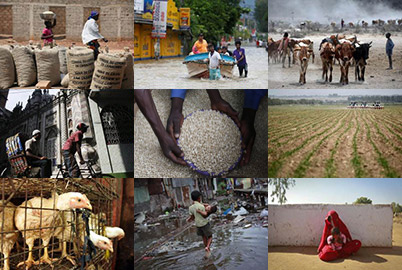* Any views expressed in this article are those of the author and not of Thomson Reuters Foundation.
NEW DELHI, JULY 9. Following a rapid assessment in some of the flood affected villages in Morigaon, Sonitpur and Nowgaon districts of Assam, Oxfam India has decided to respond with water, sanitation and public health and emergency food security and shelter support. The unprecedented early flood this year has affected 2.4 million people an displaced half a million in the State so far.
''The need for immediate humanitarian assistance is crucial and must be undertaken at a greater speed and scale. The situation in camps and villages continues to be grim. Hopefully, the funds of Rs. 500 crore that the Prime Minister announced on his recent visit to Assam will also soon start flowing providing relief to the worst affected districts,'' says Nisha Agrawal, Chief Executive Officer (CEO), Oxfam India.
The Oxfam India assessment team visited flood affected areas from July 3 to July 6, 2012 in Morigaon and Sonitpur district in Assam. The team also met key state and district level officials and district level co ordination meeting of non-government organisations (NGOs) was organised to gain an understanding on their response plan.
``Oxfam India's response package would involve a mix of provision of clean drinking water, temporary sanitation facilities, and distribution of hygiene kits, public health promotion, emergency shelter and construction of toilets,'' says Moutushi Sengupta, Director Programs and Advocacy, Oxfam India.
The 2012 floods in June this year because of heavy rains and breaches in embankments of the Brahmaputra and its tributaries have caused colossal loss of life and property across the state. However, there are some districts that have been worst hit namely Morigaon, Sonitpur and Nowgaon affecting more than 13,19,260 people. According to the reports 588 villages are severely affected by the floods. The total number of people displaced from the State were 4,84,555 (government numbers/cumulative figure). Nearly 1,56,681 displaced persons continue to live in relief camps till today.
The flood affected areas in Assam are poverty pockets and are most vulnerable to disaster risks. Though Morigaon district is annually affected due to floods, the recent floods are reported to be the worst in the last 10 years. Moreover, the floods have affected districts where preparedness and coping mechanism is low such as Sonitpur district. The impact of the floods in Sonitpur district has also been very severe.
There are some villages which are damaged to such an extent that it is not possible for people to go back to. Inhabitants from these villages continue to reside in the government supported Internally Displaced Persons (IDP) camps. Currently the number of displaced across the three districts is 156,551 persons. As on 6th of July reporting the number of IDP camps is 175 across the 3 districts. Their sizes can vary.
With this being just the beginning of the monsoons in Assam, the flood-affected population face major challenges. While rains have stopped for the time being, further rains could pose a major threat of not only the returnees but also people still living in emergency shelters or on raised river/road embankments, railway line.
``The possibility of contamination of hand pumps, the main drinking water source has increased risk of water-borne diseases. Diarrhoea cases are being reported from some IDP camps. Other ailments like fever, and skin diseases are few-and-far in between so far, the situation needs to be monitored when the receding floodwaters drain out leaving behind pools of stagnant water in low-lying resident areas,'' says Zubin Zaman, India Humanitarian Manager, Oxfam India.
The Oxfam India assessment team has recommended that Oxfam respond to the flood crisis with humanitarian assistance in the key areas of ensuring safe drinking water, sanitation, disease control and hygeine promotion, emergency food security and livelihood and shelter keeping the gender focus in mind.
Support Oxfam India's Humanitarian Appeal. Donate in this link:

